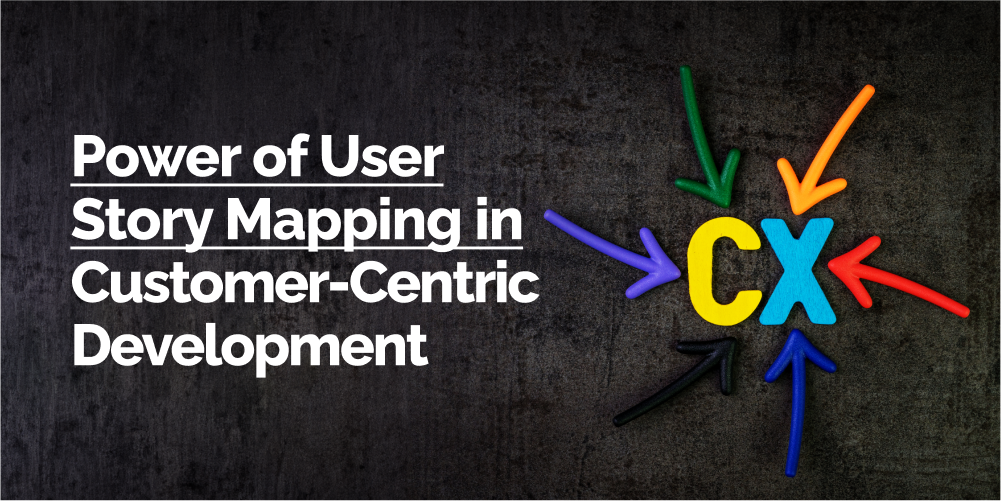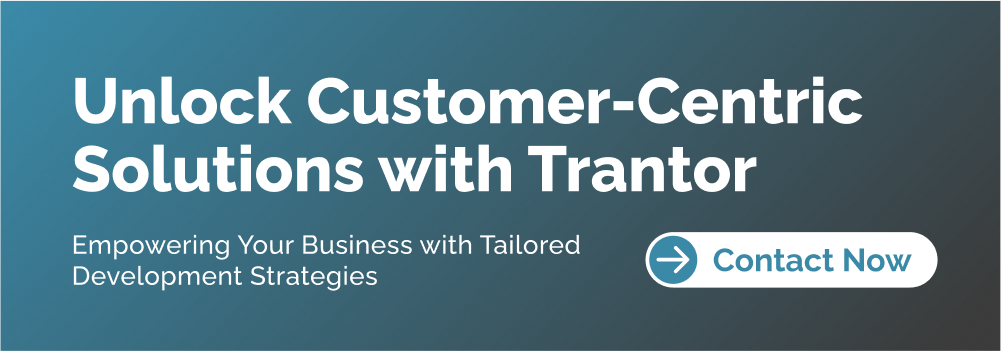CSaaS, zBlog
Unlock Customer-Centric Solutions with Trantor
atif | Updated: September 16, 2024

Empowering Your Business with Tailored Development Strategies
In today’s fast-paced digital landscape, customer-centric development has become the cornerstone of successful product and service delivery. As businesses increasingly prioritize user experiences, the need for effective frameworks to guide this process has become paramount. Enter user story mapping—a simple yet powerful tool that helps teams build products that align closely with customer needs. Whether you’re developing a software solution, website, or mobile app, user story mapping fosters collaboration and ensures that customer requirements are front and center throughout the product development lifecycle.
This article explores how user story mapping is pivotal in unlocking customer-centric development and how it can transform how teams build products.
What is User Story Mapping?

User story mapping is a visual representation of a user’s steps to accomplish a task or achieve a goal. Developed by Jeff Patton, this technique organizes user stories in a two-dimensional map, giving teams a clear view of the user journey while prioritizing features or tasks. The vertical axis (or y-axis) usually represents user activities, while the horizontal axis (or x-axis) captures the flow of tasks in a sequential timeline.
This visual layout helps teams understand how users interact with the product, identify gaps in the user experience, and organize development tasks based on importance, dependencies, and customer value.
Why User Story Mapping is Key to Customer-Centric Development

1. Focus on the User’s Journey
User story mapping is inherently customer-centric because it starts with the user’s perspective. The method encourages teams to think about how customers will interact with the product and what their key pain points are. This focus ensures that the product’s development is aligned with real-world customer needs rather than arbitrary feature sets.
2. Breaking Down Complex Features
In large projects, it can be easy to lose sight of the bigger picture or become bogged down by overly complex requirements. User story mapping breaks down these complexities into smaller, manageable stories that can be easily understood by all team members. Each story represents a slice of functionality that delivers value to the user, making it easier for development teams to prioritize the most important aspects.
3. Encourages Collaboration and Transparency
Customer-centricity thrives in collaborative environments. By involving stakeholders, developers, and product managers in the story-mapping process, everyone gains a shared understanding of what needs to be achieved. This transparency helps mitigate miscommunication and ensures that all team members are working toward the same goal—delivering a great user experience.
4. Visualizing Product Development
Traditional development methods like Waterfall often follow a linear approach, where requirements are defined upfront and changes are difficult to make later. User story mapping, on the other hand, is agile and flexible. By visualizing the entire product development process, teams can easily make adjustments as customer feedback comes in. It also highlights the progress of ongoing tasks, making it easier to track the development status at any point in time.
5. Prioritization Made Simple
One of the most significant advantages of user story mapping is the ability to prioritize effectively. The top stories in the map are often the highest priority tasks or those that deliver the most value to the customer. This ensures that the development team focuses on building what truly matters first, without getting bogged down by secondary features that can be delivered later.
The Steps Involved in User Story Mapping

To get the most out of user story mapping, it’s crucial to follow a structured approach. Below is a breakdown of the key steps involved in creating a successful user story map:
1. Identify the User Personas
Begin by identifying the primary personas who will interact with your product. These personas represent your target audience and their unique needs. Understanding who your users are is vital to crafting relevant user stories.
2. Outline the User Goals or Activities
Once you’ve identified the personas, the next step is to list the key activities they will perform while using your product. These activities represent the high-level goals your users want to achieve, such as “placing an order” or “signing up for an account.”
3. Break Down Activities into User Stories
For each activity, break it down into smaller, manageable tasks or user stories. For instance, the activity “placing an order” could be divided into stories such as “browsing products,” “adding items to the cart,” “checking out,” and “receiving an order confirmation.”
4. Organize Stories into a Map
Now, arrange the user stories in a map format. The stories are placed on a timeline that follows the natural flow of user interactions, from beginning to end. This layout allows teams to visualize the user’s journey and how different stories connect.
5. Prioritize Features Based on Customer Value
After creating the map, prioritize the stories based on their importance to the user experience. High-priority stories should be at the top of the map, representing features that deliver the most value. Lower-priority stories can be developed later, based on available resources and feedback.
6. Plan Releases and Sprints
User story mapping aligns perfectly with agile methodologies like Scrum. Once the map is in place, it can be used to plan product releases and sprints. Teams can easily decide which stories to include in the next sprint, ensuring that each iteration delivers usable, customer-centric features.
Benefits of User Story Mapping in Customer-Centric Development

1. Better User Experience
The end goal of user story mapping is to improve the overall user experience. By prioritizing user stories that directly address customer needs and challenges, teams can build products that not only work but delight users. Every story in the map serves as a reminder to keep the user’s perspective at the forefront.
2. Faster Time-to-Market
Story mapping allows teams to focus on the most valuable features, enabling quicker product releases. Instead of waiting for all features to be perfect, teams can ship the most important functionalities first, gather feedback, and iteratively improve the product.
3. Reduced Risk
Building customer-centric products reduces the risk of developing features that don’t align with user needs. Story mapping offers a clear vision of the user journey and highlights potential gaps or pain points that could result in user dissatisfaction. By addressing these early on, teams can reduce the chances of a failed product.
4. Improved Cross-Functional Communication
Story mapping facilitates cross-functional communication between development, marketing, sales, and customer support teams. When everyone is involved in the mapping process, a shared understanding of the product vision and roadmap is created. This alignment helps eliminate silos and ensures that all departments are on the same page.
5. Continuous Improvement
Story mapping is a living document that evolves with the product. Teams can revisit the map after each sprint or release, adjusting priorities based on real-time user feedback. This ensures that development stays aligned with customer needs throughout the entire product lifecycle.
Common Pitfalls in User Story Mapping and How to Avoid Them

Despite its effectiveness, there are common mistakes teams can make when using user story mapping. Below are a few tips to avoid these pitfalls:
- 1. Overloading the Map: Too many stories can clutter the map and make it difficult to prioritize. Stick to the most critical tasks that deliver real value.
- 2. Not Involving All Stakeholders: Ensure that everyone who has a stake in the product is involved in the mapping process. This avoids miscommunication and creates a unified vision.
- 3. Ignoring User Feedback:The goal of user story mapping is to build customer-centric products. Regularly revisit the map to ensure it aligns with real customer feedback and changing market conditions.
Conclusion
User story mapping is more than just a development tool; it’s a strategic approach to building customer-centric products. By focusing on the user journey, breaking down complex tasks, and facilitating collaboration, user story mapping empowers teams to create solutions that resonate with their target audience. At Trantor, we leverage user story mapping to deliver customer-centric solutions that drive innovation and success. As businesses compete in an ever-crowded marketplace, leveraging user story mapping can provide the edge needed to deliver products that delight users and stand the test of time.




